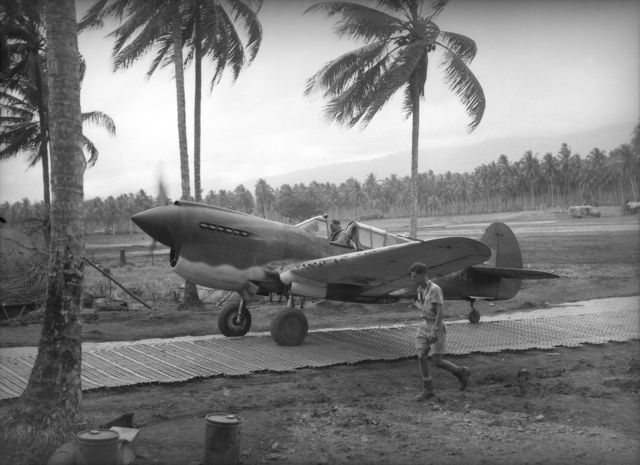Please explain 1/1/1. I expect it is 1000 Horse Power per ton? but the third 1 stumps me.
1 horsepower/1 cubic inch displacement/1 pound of engine dryweight. This was the
hyper-engine.
Specifications for Continental (I-1430-1)
Data from Aircraft Engines of the World 1946
General characteristics
-Type: 12-cylinder, liquid-cooled, inverted Vee
-Bore: 5.5 in (139.7 mm)
-Stroke: 5 in (127.0 mm)
-Displacement: 1,425 cu in (23.35 l)
-
Dry weight: 1,615 lb (732.6 kg)
Components
-Valvetrain: Overhead cam with 4 valves per cylinder
-Supercharger: Gear driven centrifugal 5.97:1 gear ratio
-Turbocharger: 1 x General Electric turbo-charger with intercooler
-Fuel system: 1 x Bendix-Stromberg PD-12P2 updraught injection type carburetor with automatic mixture control
-Fuel type: 100/130 grade aviation gasoline
-Oil system: Pressure feed at 100 psi (689,475.73 Pa) with dry sump, 100–120 S.U. (20.5–25.1 cs) grade oilCooling system: liquid, 50% Glycol, 50% water
-Reduction gear: 0.385:1 spur reduction gear
Performance
-Power output: *(take-off) 1,600 hp (1,193.1 kW) at 3,300 rpm at 61 in (1,549.4 mm) Hg / +15.5 lb (7.0 kg) boost
--(emergency) 2,100 hp (1,566.0 kW) at 3,400 rpm at 25,000 ft (7,620 m)
--(military) 1,600 hp (1,193.1 kW) at 3,300 rpm at 25,000 ft (7,620 m)
--(normal) 1,150 hp (857.6 kW) at 3,000 rpm at 25,000 ft (7,620 m)
--(cruising) 920 hp (686.0 kW) at 2,780 rpm at 25,000 ft (7,620 m)
-Specific power:
1.47 hp/cu in (67.18 kW/l)
-Compression ratio: 6.5:1
-Specific fuel consumption: 0.47 lb/hp/hr (0.286 kg/kW/hr)
-Oil consumption: 0.025 lb/hp/hr (0.015 kg/kW/hr)
-Power-to-weight ratio:
1.45 hp/lb (2.384 kW/kg)
Compare...
Specifications Allison (V-1710-F30R / -111)
Data from Aircraft Engines of the World 1946 and Jane's Fighting Aircraft of World War II.
General characteristics
-Type: 60° V-12 supercharged four-stroke liquid-cooled piston aircraft engine.
-Bore: 5.5 in (140 mm)
-Stroke: 6.0 in (152 mm)
-Displacement: 1,710 cu in (28.02 l)
-Length: 86 in (2,184 mm)
-Width: 29.3 in (744 mm)
-Height: 37.6 in (955 mm)
-Dry weight:
1,395 lb (633 kg)
-Frontal Area: 6.1 sq ft (0.6 m2)
Components
-Valvetrain: Two inlet and two exhaust valves per cylinder with sodium-cooled exhaust valves, operated by a single gear-driven overhead camshaft per bank of cylinders
-Supercharger: Centrifugal-type, single-stage, 8.1:1 gear ratio, 15-vane, 10.25 in (260 mm) diameter impeller, and General Electric turbo-supercharger with intercooler
-Fuel system: 1 x Stromberg PD-12K8 2-barrel injection[clarification needed] downdraught carburetor with automatic mixture control
-Fuel type: 100/130 octane gasoline
-Oil system: Pressure fed at 60–70 psi (414–483 kPa), dry sump with one pressure and two scavenge pumps.
-Cooling system: Liquid-cooled with a mixture of 70% water and 30% ethylene glycol, pressurized.
-Reduction gear: Spur reduction gear, 0.5:1 ratio, right hand tractor (V-1710-F30L / -113 is the same engine with LH rotation)
-Starter: Jack & Heinz JH-5L electric inertia starter
-Ignition: 1 x R.B. Bendix-Scintilla DFLN-5 dual magneto, 2 x 12 point distributors, 2 x spark plugs per cylinder fed by a shielded ignition harness.
Performance
-Power output:
--Take-off: 1,500 hp (1,119 kW) at 3,000 rpm and 56.5 inHg (190 kPa (28 psi) manifold pressure
--Military: 1,500 hp (1,119 kW) at 3,000 rpm at 30,000 ft (9,144.00 m)
--Normal: 1,100 hp (820 kW) at 2,600 rpm at 30,000 ft (9,144.00 m)
--Cruising: 800 hp (597 kW) at 2,300 rpm at 30,000 ft (9,144.00 m)
-Specific power:
0.88 hp/cu in (39.3 kW/L)
-Compression ratio: 6.65:1
-Oil consumption: 0.025 lb/hp/hr (0.01475 kg/kW/hr)
-Power-to-weight ratio:
1.05 hp/lb (1.76 kW/kg)
So why was the Continental not used?
For the same reason that the Goat Island built WW II torpedoes fell into disfavor. Private Enterprise once they had figured out how to build a competitive engine better than the government designed piece of crap were allowed to build their non-hyper engine version and sell it to the government.
More information here.
=======================================================
In contemporary terms, it is like the incompetents at NASA, for this past decade, puttering around with their government designed rocket, not even out of the test stands, yet, while Elon Musk runs circles around them with his Falcons.
Sometimes, all you have to do is point and say; "I am your customer. I want this."
McP.




